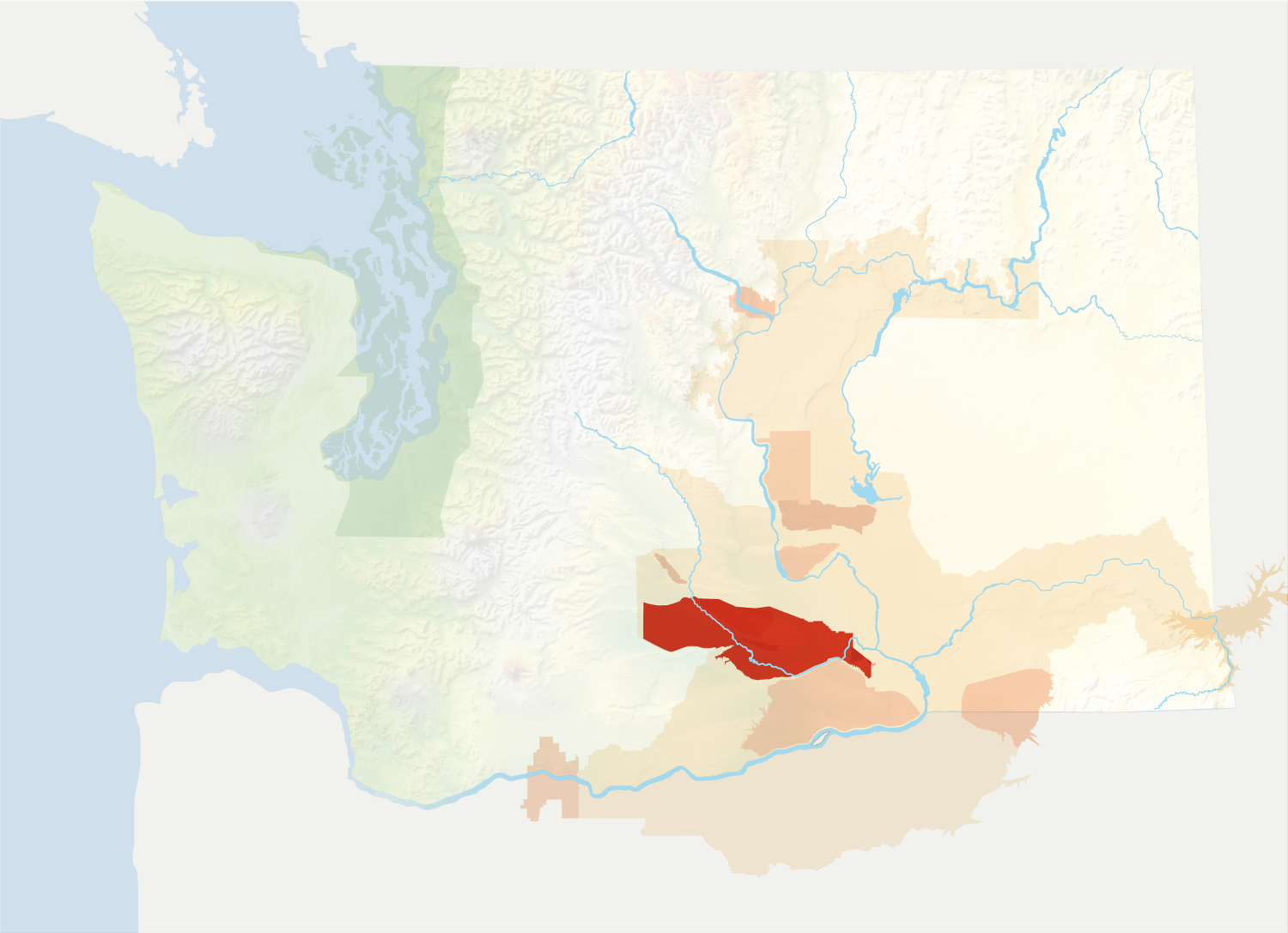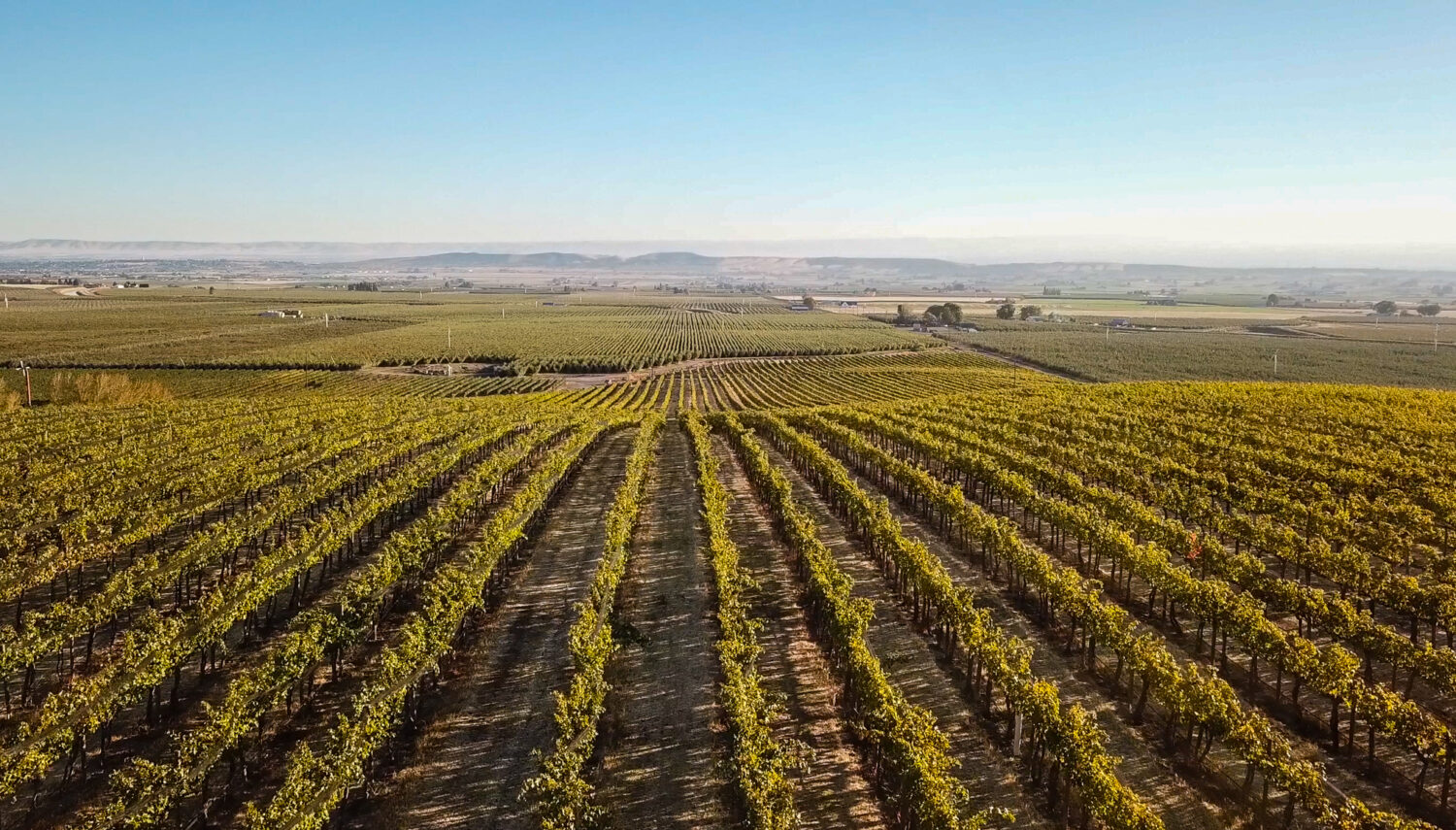Location: South-central Washington
Designated: 1983
Total Size: 665,600 acres
Acreage Under Vine: 18,924 acres (7,658 hectares)
Top Varieties: Chardonnay, Riesling, Merlot, Cabernet Sauvignon
Soils: Deep silt-loam over basalt bedrock and gravel
Average Annual Precipitation: 8 inches
Two Things to Know:
- Yakima Valley is Washington’s oldest federally approved grape-growing region.
- It is home to almost a third of the state’s planted acreage.
Yakima Valley is located in south-central Washington. It is a sub-appellation of the Columbia Valley. The valley gets its name from the Yakama Native American tribe.
Designated in 1983, Yakima Valley was the first federally recognized wine-growing region in the Pacific Northwest. It is also home to nearly one-third of the state’s planted vinifera acreage.
Yakima Valley is one of Washington’s most diverse growing regions. It also is the largest sub-appellation of the Columbia Valley, both in total size and planted acreage. The Yakima River, which bisects the appellation, provides water for irrigation as do local aquifers.
Yakima Valley is one of the few appellations in the state where white varieties are more planted than red, led by Chardonnay and Riesling. The Yakima Valley is notable for having cooler areas toward the foothills of the Cascade Mountains. It also has blazingly hot areas by the center of the Columbia Basin.
Stretches of cooler terrain in Yakima Valley are home to almost half of the Chardonnay and Riesling grown in the state. Simultaneously, Yakima Valley’s many warmer sites yield significant percentages of Washington’s best Merlot, Cabernet Sauvignon, and Syrah.

Like almost all of eastern Washington’s other growing regions, Yakima Valley soils are strongly influenced by the Missoula Floods, which were a series of dramatic cataclysms that occurred over 15,000 years ago. Moderate to deep silt-loam is layered over gravel or directly onto basalt bedrock. This foundation creates well-drained soils that are ideal for irrigated viticulture.
The variation in climate and terrain in the valley is reflected in it having multiple sub-appellations. These are Candy Mountain, Goose Gap, Rattlesnake Hills, Red Mountain, and Snipes Mountain.
Yakima Valley includes some of Washington’s oldest Cabernet Sauvignon vines at Harrison Hill Vineyard (1963).

